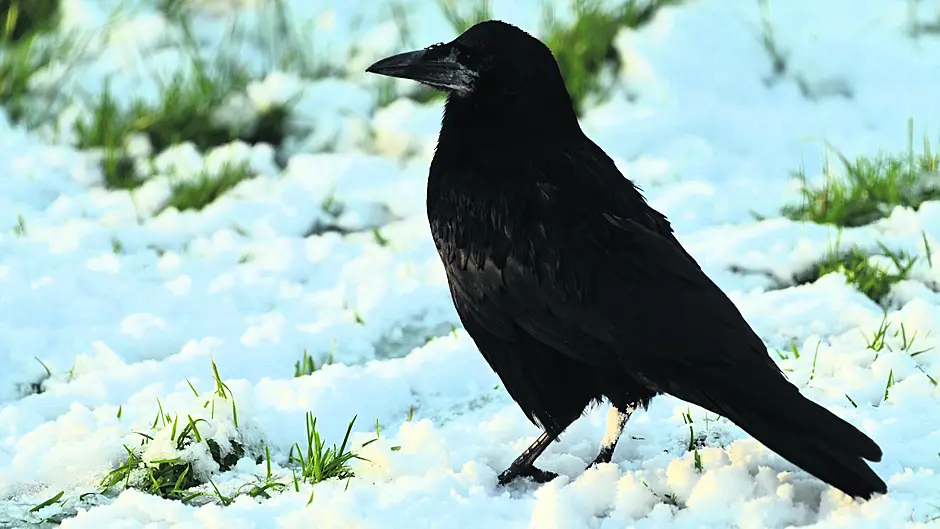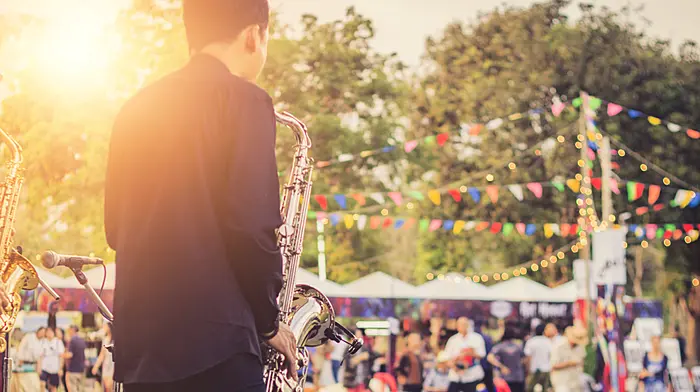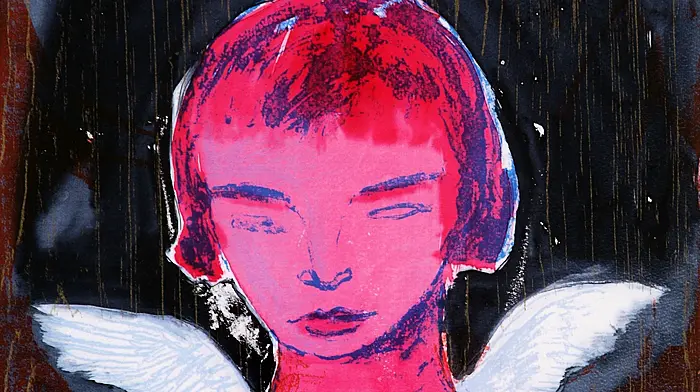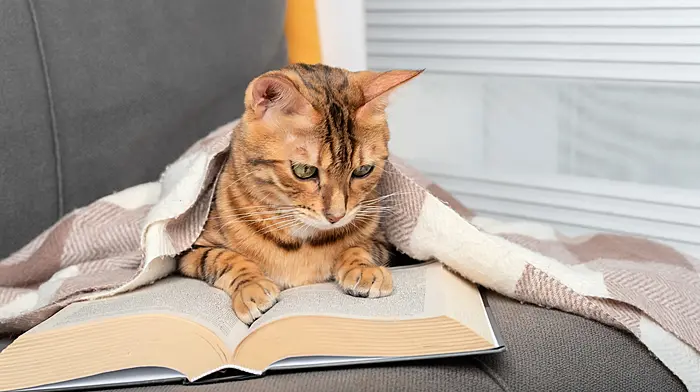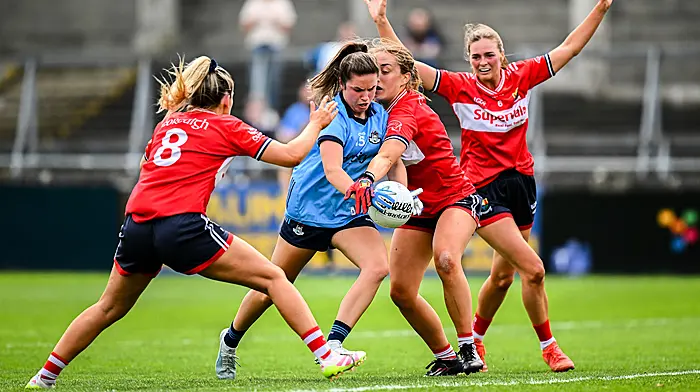by Ann Haigh
BIRDS in the crow family are known as corvids and delightfully eight species of them can be found in Ireland.
While they’re not everyone’s favourite bird, crows are intelligent, lively and resourceful. Studies have compared their intelligence to chimpanzees and seven-year-old humans and they can design and use tools, problem-solve, play, make plans and recognise human faces.
Corvids are also logical and have been observed dropping nuts onto roads so that cars drive over and crack them open.
In West Cork I’d often wondered why there are so many mussel shells along the sides of coastal roads, until one day I noticed hooded crows flying over and dropping the mussels from a height onto the hard road surface to crack them open. The birds subsequently swooped down to enjoy their fishy feast, reaping the benefits of their ingenuity.
Keep an eye out to see if you can find similar evidence, it was on the road close to Rosscarbery pier that I spotted this clever trick in action.
Irish crow species
In Ireland we have rooks, jackdaws, hooded crows, magpies, ravens, choughs, jays and the rare carrion crow. The carrion crow is one of most often seen crows in Britain, but is a scarce visitor to Ireland. Aside from magpies and jays, which have a more distinctive appearance, people tend to simply term all corvids ‘crows’ but it can be fun to try and identify them more accurately. Most of us are clear on identifying magpies, counting whether it’s one for sorrow or two for joy. Jays are more exotic looking and I have only managed to spot them a few times. They are the most secretive and shy of the Irish corvids, taking refuge in wooded areas, in particular oak woodlands which also provide them with their favourite food- acorns. They have brownish-pink, black, blue and white plumage with a black ‘moustache’ on either side of their face.
Otherwise, the different species can be recognised with practice and by using a few distinguishing features.
Group activities
Rooks, our most common corvid, are social birds and live in colonies known as rookeries. A group of rooks is known as a parliament and certainly on autumn and winter evenings parliament is a noisy and raucous affair, almost as if the rooks had frequented the Dáil bar! During these colder months, just as darkness approaches, rooks and jackdaws gather in large numbers in fields or trees in pre-roost gatherings. They arrive in a steady flow before moving en masse to their night-time roosting sites high in the treetops. The sound of the rooks and jackdaws is classical and signifies evening time in the countryside, with the roosting behaviour a sight to behold. The next morning at dawn they then head out in groups, letting each other know where the best and safest feeding grounds are.
Now is nesting time
This time of year, as winter ends, the treetop rookeries are bustling as the birds start to nest. Male and female rooks form monogamous ‘pair bonds’ and couples stay together for many years. They will build a nest together and the male feeds the female while she incubates the eggs. Both parents will then feed and look after the chicks. Rooks may live for up to 20 years, but their average lifespan is six years.
While we may see large numbers of rooks feeding, roosting and nesting together in West Cork, numbers are falling in Europe and they are listed as ‘vulnerable’ on Birdlife International’s European Red List of Birds. Destruction of nesting sites and persecution are thought to be key issues in the European decline.
Choughs
Choughs are a particular treat on our West Cork coastline. These corvids are the only crow that have an ‘amber’ conservation status according to BirdWatch Ireland, the other crow species are listed as ‘green’. Their name in Irish is cág cosdearg, meaning red-legged jackdaw and true to name they are instantly recognisable by their bright red legs and beaks. They are distributed all along the Atlantic and south coast but are completely absent in the east. They seem to be doing particularly well in West Cork and can often be seen foraging on beaches, coastal fields and cliffs in social groups. They are invertebrate specialists enjoying a diet of worms, insects and insect larvae. We frequently see them at the tideline, using their long curved beaks to dig and toss the seaweed as they seek the insects that feed on the decaying seaweed. It’s a pleasure to see them flying acrobatically through the sky where they swoop, soar and even enjoy performing barrel rolls.
Benefits
Corvids, like all species, have their niche in the ecosystem. They are omnivores, eating both plant and animal materials, and except for choughs, are opportunistic feeders. It is this that gives them their bad reputation for taking eggs and chicks from nests, however this also means they play an important role in cleaning up the environment, consuming tonnes of waste and limiting the spread of disease. Crows, in particular jays, also assist in forest growth by seed dispersal. They harvest and cache tree seeds, such as acorns, for their winter food supply via a process known as ‘scatter-hoarding’. Not all seeds get eaten however, but grow in their new location. Similarly, when crows eat fruit, they disperse the seeds via their droppings. Corvids have been called ‘ecosystem engineers’ for these services.
Even if they are not Ireland’s most spectacular looking bird family, they are the most intelligent and behaviourally complex making them truly fascinating to watch.
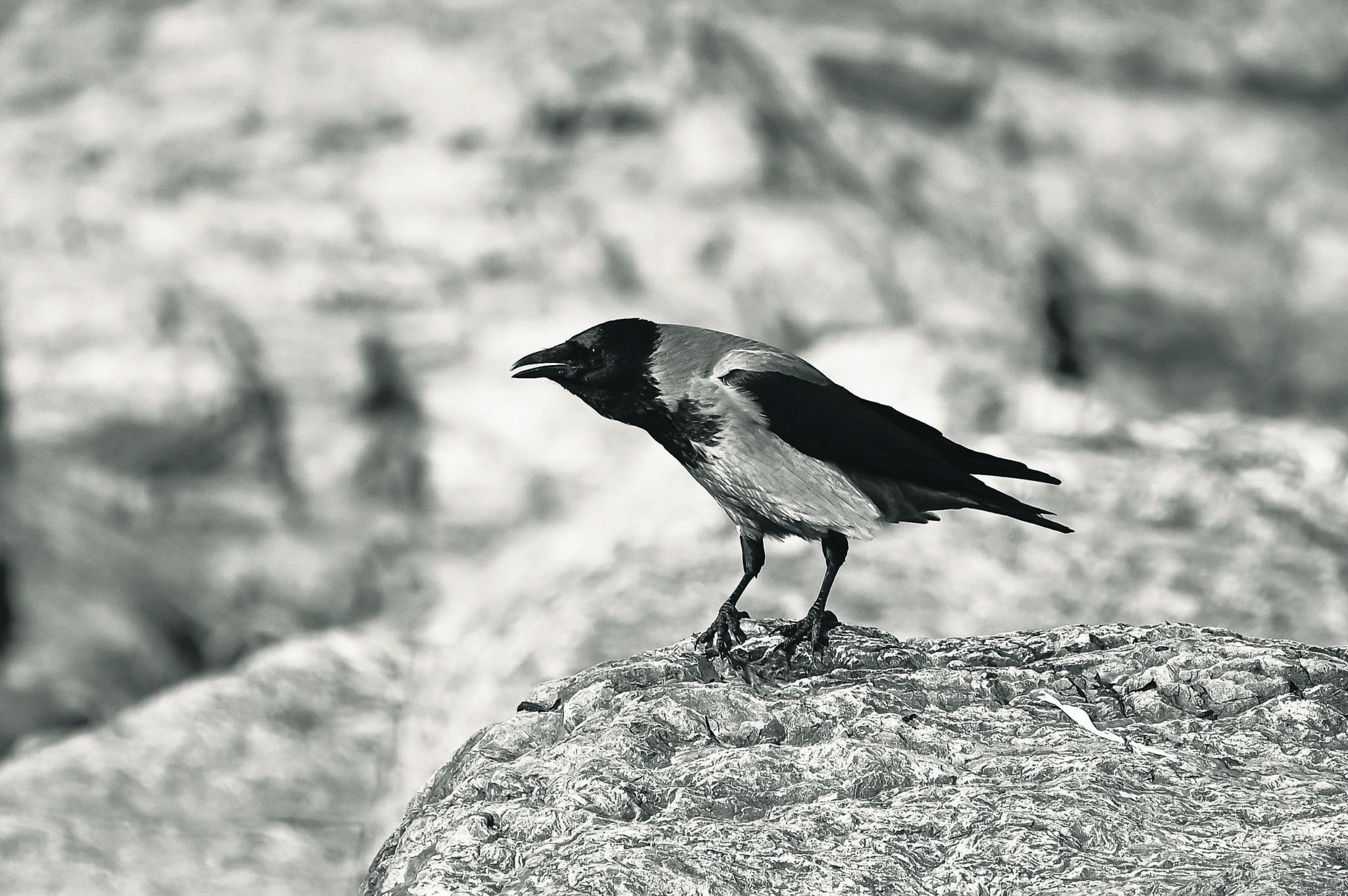 The hooded crow is two toned, black and grey with a pale grey body and a black head. Inset: a chough enjoying some aerial acrobatics.
The hooded crow is two toned, black and grey with a pale grey body and a black head. Inset: a chough enjoying some aerial acrobatics.
Species and features
• Rook: Very common, unlikely to be seen singly, feathers at top of legs give the appearance of ‘trousers’, adults have bare facial areas at base of their beaks, peaked crown/top of head, black eyes.
• Jackdaw: Smaller than the rook, neck and the back of the head are pale grey/silver, pale bluish/white eyes.
• Hooded crow: Same size as rook but is two toned, black and grey with a pale grey body and a black head, upper breast, wings and tail.
• Raven: Largest in crow family, usually alone or in pairs, entirely black, heavy thick beak, thick neck and shaggy throat feathers.
• Chough: Coastal bird, bright red legs and feet, long down-curved red beak.
• Carrion Crow: Rare in Cork, all-black version of a hooded crow, lacks ‘trousers.’
Ann Haigh MVB MSc MRCVS is a Skibbereen resident, a mum-of-two and a veterinarian with a masters in wildlife health and conservation and she is passionate about biodiversity and nature.

